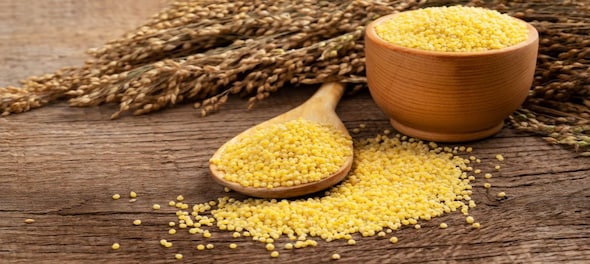
At a time when the whole world is talking about sustainability and health, millets are increasingly becoming a part of mainstream discourse and popular culture. Millets have long been associated with being a poor man's food, but now they are potentially gaining popularity after the UN decided to designate 2023 as the International Year of Millets in response to a proposal by India.
The single greatest push to launch the Year of Millets would be to make them aspirational and enhance their demand throughout the country and the globe while addressing production issues surrounding millets.
The Lifestyle for Environment (LiFE) Mission, a nationwide movement launched by the Prime Minister to encourage individual and community-led actions to promote sustainable production and consumption, was recently launched in India. This has the potential to increase millet consumption nationally.
Here’s what India, home to 80 percent of world’s millet output, could do to nudge for higher millet uptake. Primarily, we should focus on three key things to build the right ecosystem for public consumption of millets.
Introduce and promote millet uptake among children
The inclusion of different recipes for children enrolled in Integrated Child Development Services and mid-day meal schemes will help in increasing millet consumption amongst children. A focus on incorporating millets through different nutritious recipes could lead to increased preference for millets by children and that will help them in acquiring a taste for millets at a young age itself.
This will not only serve to increase the overall demand for millets but can also help towards reducing childhood malnutrition and anaemia . Ultimately, this will provide a stable market with price assurance for farmers and ensure that the beneficiaries have access to more nutritious food, assisting India in achieving its objectives for nutrition security.
Bring in value-added produce of millets such as 'ready-to-eat' products
Fast moving consumer goods (FMCG) companies can let the genie out of the bottle to produce and market millet-based snacks as a nutritious alternative for consumers. While some are making progress with ragi cookies and chips, there are multiple types of millets that have the ability to be turned into snackable, ready-to-eat foods. A further incentive for consumers to try millets is the inclusion of creative recipes that are tasty and healthy on the packaging of millet-based food brands.
Lack of knowledge of millet recipes is a deterrent for many, and sharing recipes could help with this. To make this happen, however, a thorough study that will improve our comprehension of the market segments, customer preferences, and export competitiveness must first be carried out.
Identify and introduce millet varieties that are bred for specific end-use
Information about quality traits of Indian millet cultivars is required for utilisation by farmers, industry and consumers. This will help in selection of varieties suitable for different products based on grain composition and processing quality among various millet cultivars. This type of selection has been done in wheat varieties for example hard wheat with strong gluten and high protein content are used for bread making while soft wheat with low protein content and weak gluten for cookie making. The ability to supply millets that meet local demand for specific end-use quality requirements including bio-fortified varieties will help in ensuring better prices & quality for farmers and consumers, respectively.
Generally, most of the millets that are produced by farmers are primarily for cattle fodder and a very small quantity for human consumption. We have to be mindful of the fact that we have to create a steady user base for millets and hence work towards introducing varieties that may find quick takers among consumers. Taste becomes a critical factor without which it would be difficult to create a mass market for millets.
Why is it significant?
Millets are significant because of their enormous potential to support livelihoods, boost farmers’ income and guarantee global food and nutritional security.
A rise in millet demand will undoubtedly also encourage the growth of numerous small- and large-scale processing and packaging businesses in the nation leading to creation of more jobs. To make it economically feasible, all that is needed is a consistent effort on the part of all stakeholders at various levels. In the last decade foods such as sweet potatoes, coconut, beetroot, jackfruit and turmeric have gained popularity as ‘superfoods’, and the International Year of Millets presents us with an opportunity to put the spotlight on millets. The ideas listed above can serve as a good starting point to make the hardy grain aspirational for every Indian.
— The author, Aneesh Jain, is Founder & CEO, Gram Unnati. The views expressed are personal.
(Edited by : C H Unnikrishnan)
Check out our in-depth Market Coverage, Business News & get real-time Stock Market Updates on CNBC-TV18. Also, Watch our channels CNBC-TV18, CNBC Awaaz and CNBC Bajar Live on-the-go!


Cong leaders 'failed' to protect party's constitution says FM Nirmala Sitharaman in Bihar
May 21, 2024 4:01 PM
Who will succeed Modi? Oppn thinks Amit Shah will, but PM said this
May 21, 2024 2:38 PM
1100 villagers boycott Lok Sabha and Assembly polls in Odisha, here's why
May 21, 2024 10:56 AM

